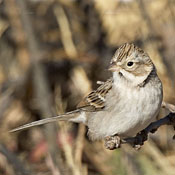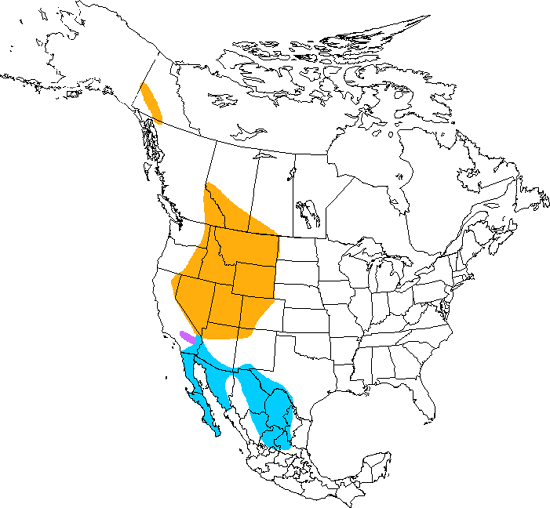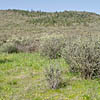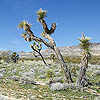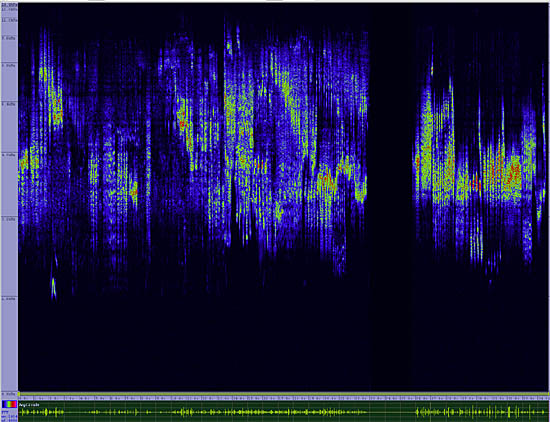Brewer's Sparrow
Spizella breweri

Perching

Length: 6 in. (14 cm )
Most conspicuous in desert shrubby areas in the winter, large flocks of Brewer\'s Sparrow feed on the ground and low bushes for seeds. They often move with other sparrow species, such as White-crowned Sparrows and Black-throated Sparrows. During the summer pairs set up territories in Sage Brush and higher altitude dry shrub areas, where they feed largely on insects and spiders. They can go for almost a month without water, evidently making water from the seeds they eat.
The four-digit banding code is BRSP.
Bibliographic details:
- Article: Brewer's Sparrow
- Author(s): Dr. Biology
- Publisher: Arizona State University School of Life Sciences Ask A Biologist
- Site name: ASU - Ask A Biologist
- Date published:
- Date accessed:
- Link: https://askabiologist.asu.edu/activities/bird/brewers-sparrow
APA Style
Dr. Biology. (). Brewer's Sparrow. ASU - Ask A Biologist. Retrieved from https://askabiologist.asu.edu/activities/bird/brewers-sparrow
Chicago Manual of Style
Dr. Biology. "Brewer's Sparrow". ASU - Ask A Biologist. . https://askabiologist.asu.edu/activities/bird/brewers-sparrow
Dr. Biology. "Brewer's Sparrow". ASU - Ask A Biologist. . ASU - Ask A Biologist, Web. https://askabiologist.asu.edu/activities/bird/brewers-sparrow
MLA 2017 Style
Be Part of
Ask A Biologist
By volunteering, or simply sending us feedback on the site. Scientists, teachers, writers, illustrators, and translators are all important to the program. If you are interested in helping with the website we have a Volunteers page to get the process started.

